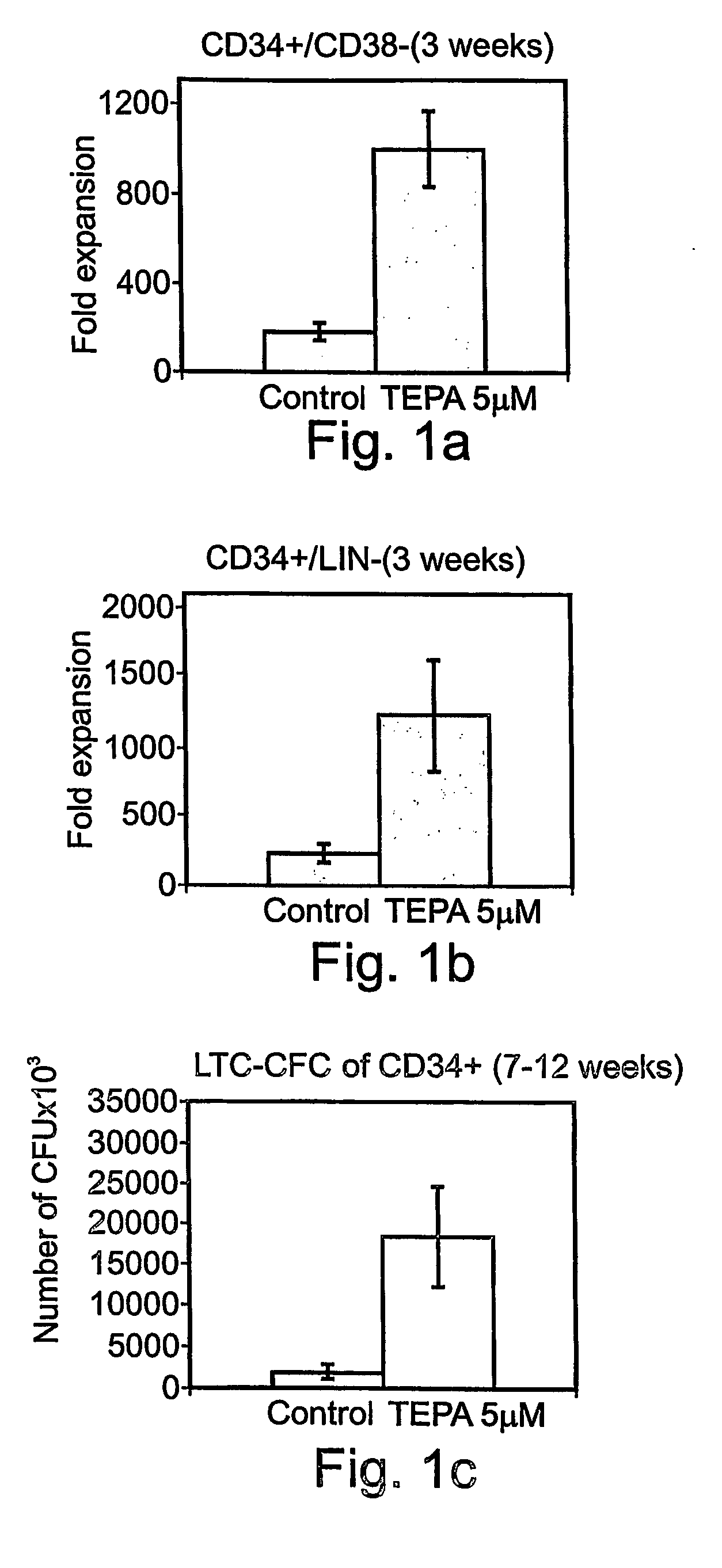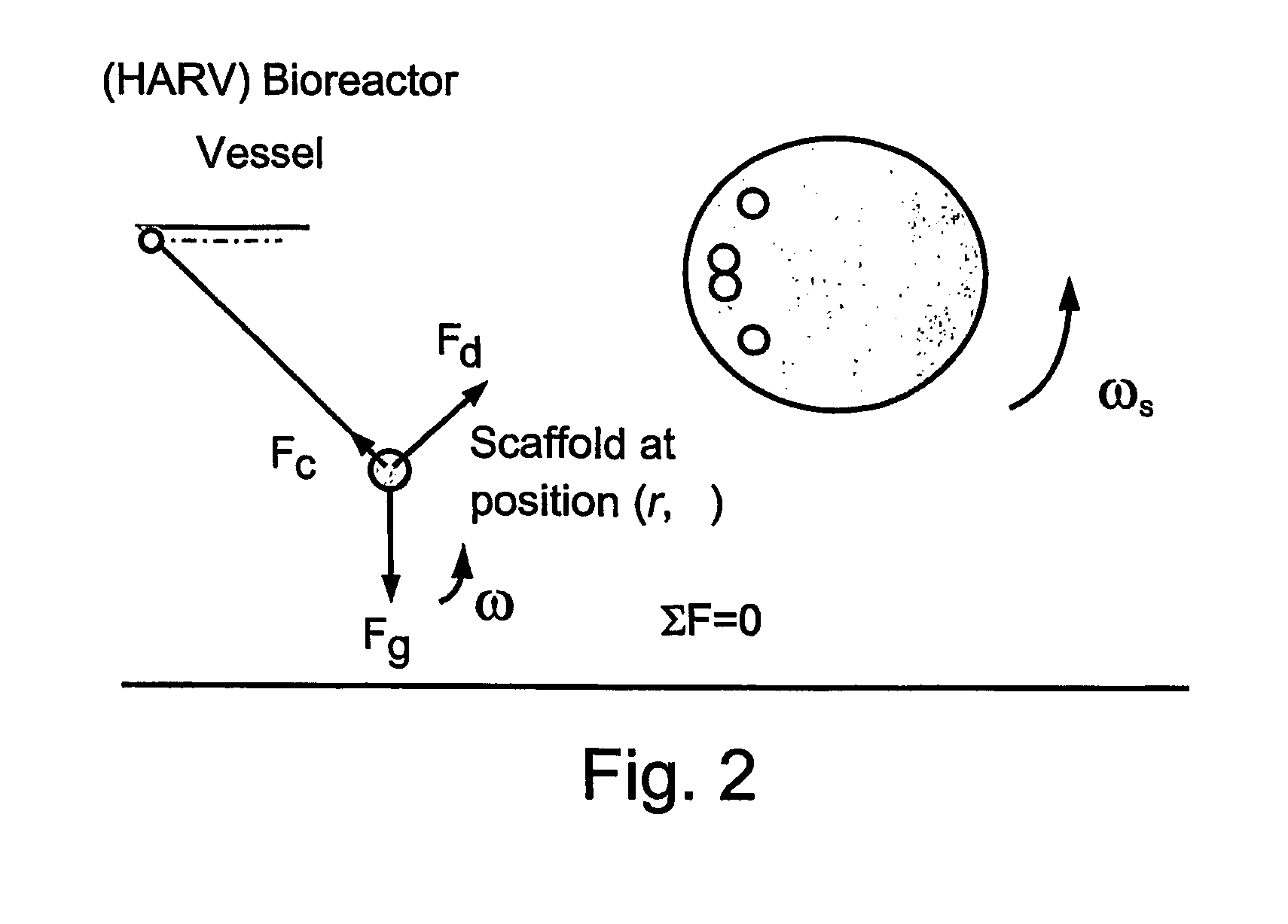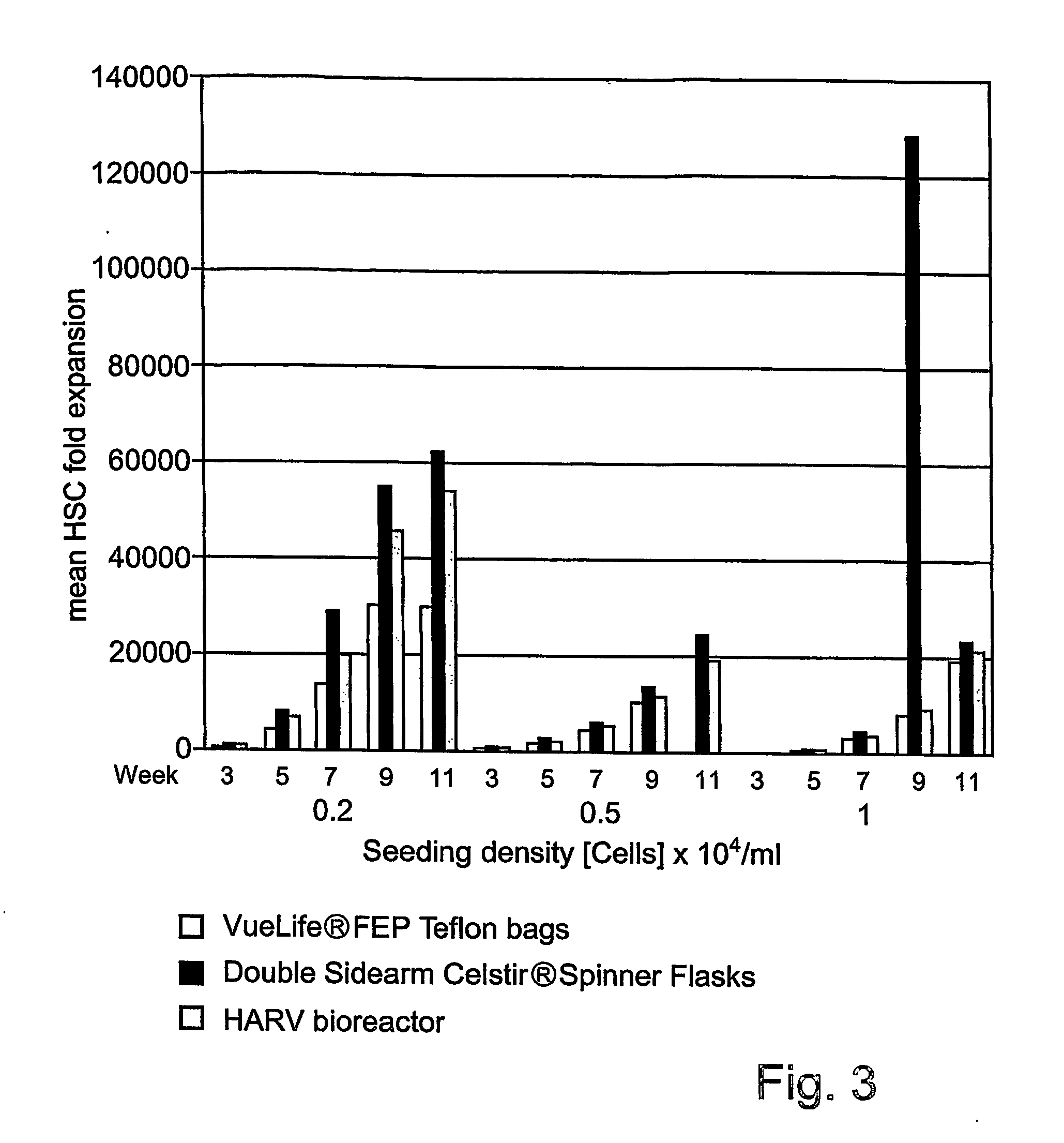Methods for ex-vivo expanding stem/progenitor cells
a technology of stem cells and progenitor cells, applied in the field of ex-vivo expansion and culture of progenitor and stem cells, can solve the problems of low number of hsc cells collected in each cord blood unit, limiting the use of cord blood for children and adolescents, and requiring delicate and time-consuming detachment of stem cells from the matrix, etc., to achieve the effect of improving the yield and fold increase of self-renewable stem cells
- Summary
- Abstract
- Description
- Claims
- Application Information
AI Technical Summary
Benefits of technology
Problems solved by technology
Method used
Image
Examples
examples
[0463] Reference is now made to the following examples, which together with the above descriptions illustrate the invention in a non-limiting fashion.
[0464] Generally, the nomenclature used herein and the laboratory procedures utilized in the present invention include molecular, biochemical, microbiological and recombinant DNA techniques. Such techniques are thoroughly explained in the literature. See, for example, “Molecular Cloning: A laboratory Manual” Sambrook et al., (1989); “Current Protocols in Molecular Biology” Volumes I-III Ausubel, R. M., ed. (1994); Ausubel et al., “Current Protocols in Molecular Biology”, John Wiley and Sons, Baltimore, Md. (1989); Perbal, “A Practical Guide to Molecular Cloning”, John Wiley & Sons, New York (1988); Watson et al., “Recombinant DNA”, Scientific American Books, New York; Birren et al. (eds) “Genome Analysis: A Laboratory Manual Series”, Vols. 1-4, Cold Spring Harbor Laboratory Press, New York (1998); methodologies as set forth in U.S. Pa...
example i
[0490] Copper Chelation and Ex Vivo Expansion of HSC in a Gas Permeable Culture Bag: Mononuclear cells (MNC) were collected from either bone marrow (BM), mobilized peripheral blood (MPB) or umbilical cord blood (UCB, as in FIG. 1) and Hematopoietic stem / progenitor cells are isolated by magnetic activated cell sorting (MACS technology, Milteny, Bergisch-Gladbach, GmbH) as described hereinabove. The HSC are then seeded in gas permeable culture bags at concentrations of 1×104 cells / ml in MEM-alpha with 10% Fetal Calf Serum (FCS) containing 50 ng / ml of the following cytokines: SCF, TPO, Flt-3, IL-6 and incubated for at least three weeks in a 5% CO2 humidified incubator. The culture bags are divided to two groups while the first is supplemented with 5 μM of GC's leading copper chelator tetraethylenepentamine (TEPA, Aldrich, Milwaukee Wis., USA) the other group is not. The culture bags were then replenished once weekly with the same media components. FIG. 1A and B shows the fold expansion...
example ii
Enhanced Ex-Vivo Expansion of Hematopoietic, Mesenchymal and Endothelial Stem Cells Grown With Transition Metal Chelators in Spinner Flask and Rotating Wall Vessel Bioreactors.
[0491] As detailed hereinabove, culture in different bioreactor types affords greater opportunity for scaling up of culture volumes, but also requires solution of problems not encountered in simpler, static bioreactors. In order to assess the efficacy of different bioreactor conditions on expansion of stem and / or progenitor cells, HSC, MSC and ESC cultures were expanded in static, spinner flask and rotating wall vessel bioreactors, in the presence of cytokines and transition metal chelator (TEPA).
[0492] Fold expansion of total nucleated cells cultured with TEPA in the bioreactors, at 3, 5, 7, 9, and 11 weeks of culture, was clearly enhanced by growth conditions in both the spinner flask bioreactor, and the rotating wall vessel bioreactor (HARV) (see FIGS. 3-5), compared with culture in culture bags. Enhanced...
PUM
 Login to View More
Login to View More Abstract
Description
Claims
Application Information
 Login to View More
Login to View More - R&D
- Intellectual Property
- Life Sciences
- Materials
- Tech Scout
- Unparalleled Data Quality
- Higher Quality Content
- 60% Fewer Hallucinations
Browse by: Latest US Patents, China's latest patents, Technical Efficacy Thesaurus, Application Domain, Technology Topic, Popular Technical Reports.
© 2025 PatSnap. All rights reserved.Legal|Privacy policy|Modern Slavery Act Transparency Statement|Sitemap|About US| Contact US: help@patsnap.com



